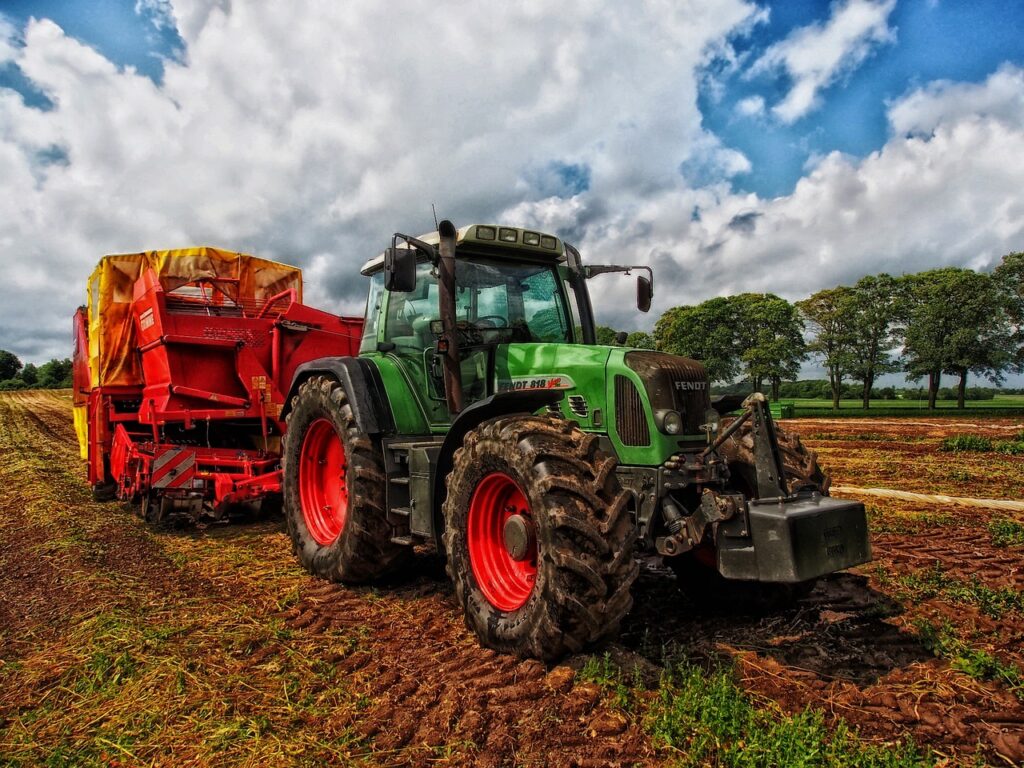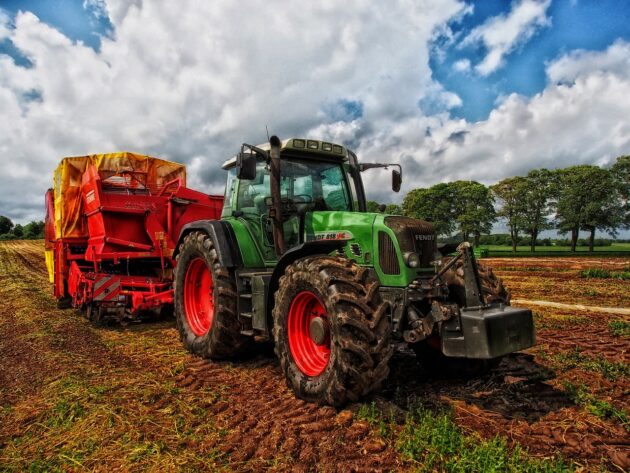
Choosing the right tractor is one of the most important equipment decisions a farmer can make. The tractor you select must be powerful enough to handle the heaviest jobs on your farm, yet sized appropriately for your acreage and terrain. The good news is that with so many tractor options on the market, you’re sure to find one that fits your unique agricultural needs.
This article will guide you through the key factors to consider when selecting a tractor. Read on for tips to match the perfect tractor to your farming requirements.
Table of Contents
Understanding Your Agricultural Needs
Before comparing tractor models, first make a realistic assessment of your agricultural needs. Carefully consider the following:
1. Identifying your farm type
The scale and purpose of your farm operations should guide which size tractor makes the most sense. For example, small hobby farms under 50 acres typically utilise compact utility tractors under 40 HP for light duties like mowing small pastures, basic tilling, moving dirt, and moving contractors around the property. Family farms between 50 and 500 acres often need a 40-100 HP tractor to work livestock feed plots, hay fields, and croplands growing corn/soybeans/wheat on moderately sized tracts.
Moreover, large commercial farms with over 500 acres require high-horsepower tractors (over 100 HP) for heavy-duty fieldwork, pulling large implements efficiently across vast tracts of land.
2. Crop types and activities
The mix of crops grown and seasonal tasks performed dictate what implements the tractor must accommodate. For example, field crops like corn and soybeans require disking, ploughing, planting, spraying, maintaining, and harvesting. A variety of tractor attachments are needed to accomplish these diverse jobs. Vegetable farms must plough, disk, plant, side dress, cultivate between rows, spray, and harvest multiple times across the growing season.
Orchards and vineyards mainly need tractors to pull airblast sprayers, haul harvest bins, and transport fruit. Compact, nimble tractors manoeuvre smoothly between tightly spaced rows.
3. Terrain variations
Flat fields permit standard 2WD tractors to operate efficiently, but contoured land with slopes requires additional traction and stability features. Steep hills put extra strain on engines, so higher horsepower provides sufficient power to prevent slipping and loss of control. Larger counterweights, wider wheelbases and quad track setups enhance balance on slopes. Areas with highly uneven ground from rocks, holes, divots or ruts also benefit from these specialised options.
Muddy conditions resulting from frequent rain or snow necessitate dual wheels or tracks to prevent getting stuck. Icy patches call for tyre chains mounted to the drive wheels to temporarily gain grip when needed in the field.
4. Climate factors
Northern regions experience extreme subzero and windchill temperatures during winter, making it impossible to operate equipment safely without climate-controlled conditions. High-humidity climates benefit from air-conditioned cabs to manage operator comfort during hot, muggy summers.
Farms in consistently rainy areas should have waterproof electrical systems and rust/corrosion-resistant metal components to maximise longevity, considering excess exposure to moisture inside and outside the cab. Tractors operating in drought-prone dusty environments need enhanced air filtration and pressurised cabins to optimise smooth equipment function and protect operator respiratory health.
Identifying the optimal tractor becomes easier once you objectively assess your unique needs.
Key Factors to Consider When Choosing a Tractor
The following key specifications should be high priorities when selecting an agricultural tractor:
1. Horsepower (HP) Requirements
Horsepower measures the tractor’s engine strength to handle implements. Insufficient power causes sluggish performance, while too much power burns excess fuel.
- Light Duty = under 40 HP for lifting, mowing, and tilling small gardens
- Medium Duty = 40-100 HP for haying, planting/ploughing up to 200 acres
- Heavy Duty = Over 100 HP for pulling heavy disk harrows/planters on large fields
Account for terrain factors and the heaviest implements to be used across seasons. Those working on the hilly ground should consider 25-50% higher horsepower capacity.
2. Tractor Size and Weight
When paired with horsepower, physical tractor size correlates to stability. Larger models have heavier base weights and longer wheelbases for pulling weighty implements without tipping on slopes. Compact tractors are sized for manoeuvrability in small spaces.
Type of Transmission
Transmission types include:
- Manual – Best for experienced operators on hilly terrain
- Hydrostatic – Ease of driving with sensitive speed control
- Power Shuttle – Facilitates forward/reverse shifting without clutching
- CVT (Continuously Variable Transmission) – Computerised efficiency
3. Fuel Efficiency and Engine Type
Fuel consumption varies greatly, so calculate the tractor’s annual usage costs. Most run on diesel with options like:
- 2-Cylinder – Smoother performance for lighter tasks
- 3-Cylinder- Offers a balance between power and fuel efficiency, often used in compact and medium-duty tractors. These engines are perfect for operations requiring moderate horsepower without burning through fuel quickly.
- 4-Cylinder – Ideal balance of power and efficiency
- 6-Cylinder – Max power for heavy implements with higher fuel costs
4. Attachments and Implements Compatibility
Determine which attachments, like ploughs, seeders, loaders, etc., you’ll need to hitch up. Every tractor model has a unique hitch setup, PTO HP capacity, and hydraulic flow to power implements.
5. Tyre Types and Configuration
Ag tyre options include:
- Radial – Flexible with good traction
- Bias-Ply – Handles heavy loads
- Singles – Lower cost but reduces traction
- Duals – Extra grip and floatation
Additionally, wider-spaced tyres provide greater stability on hillsides.
6. Comfort and Safety Features
Maximise productivity by selecting ergonomic controls, telematics diagnostics, weather-protected cabins, clear sightlines, and other operator-friendly enhancements. Prioritise rollover protections, seatbelts, flashing lights, and backup alarms.
7. Budget Considerations
Tractor prices range widely, so outlining must-have versus nice-to-have features allows you to hone in on the models offering the best value aligned with your budget. Securing financing also helps spread out upfront costs over a tractor’s long, useful life.
8. Maintenance Requirements
To keep your tractor running efficiently for years to come, review the maintenance schedules and parts/filter replacement requirements as manufacturers advise. Expect routine oil changes, lubrications, tyre rotations, generator servicing, etc.
Conclusion
Selecting just the right tractor involves research and analysis specific to your farm type, crops, acreage, implements, terrain, climate and budget. Carefully match key tractor specifications to your needs and operation for optimal efficiency and value for the money invested. Partnering with a trusted equipment dealer can simplify the buying experience so you roll away comfortably with the perfect tractor choice.
With your new tractor asset ready to drive into the fields, your farm’s possibilities and productivity potential open wide to help nourish the nation.
